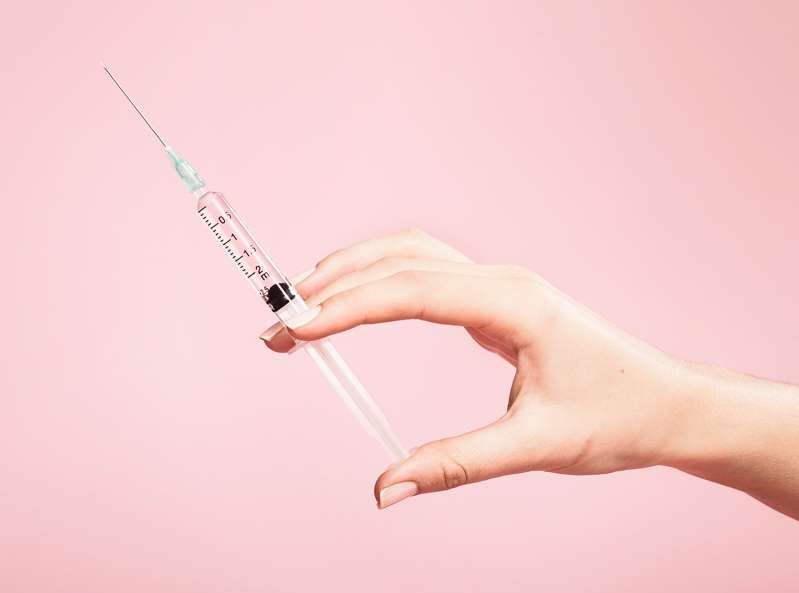
Our bodies naturally change with age, and those differences might include new wrinkles on our faces or cheekbones that aren’t as high as they once were. Dermal fillers can help minimize these signs of aging if you’re unhappy with them.
However, these changes are completely normal and occur when we lose some of the subcutaneous fat that supports our skin. Over time, the skin on the middle of our faces shifts down too, causing our cheeks to sag a bit, explains Mary Stevenson, M.D., dermatologist at NYU Langone Health. “Filler can be used to help lift and add support,” she tells SELF. It can also help soften wrinkles, Dr. Stevenson says.
There are several categories of dermal fillers, and they’re all generally administered in the same way (more on that in a bit). Before electing to have any type of cosmetic or medical procedure, it’s important to understand what the process entails and any potential risks. Understandably, you might also have concerns about visiting a doctor’s office during the pandemic. Our story about making medical appointments during COVID-19 can help you decide if now is the right time to schedule an elective procedure. But below, you’ll find information experts think you should know about dermal fillers
1. What exactly are dermal fillers?
First things first: Dermal fillers are not to be confused with Botox, injectable drugs approved by the Food and Drug Administration to smooth lines and wrinkles. The latter “freezes” muscles to reduce wrinkles, while dermal fillers are injectable implants approved by the FDA to help smooth skin and wrinkles. As the name implies, they are injected beneath your skin using a needle.
According to the FDA, there are four categories of fillers. Each is named for the type of material they’re made with:
- Hyaluronic acid is naturally produced by your body and already found in your skin and cartilage. Generally, fillers made with hyaluronic acid last between 6-12 months.
- Calcium hydroxylapatite is a mineral that is found in our bones. Fillers made with this material last up to 18 months.
- Poly-L-lactic acid is a biodegradable synthetic material that’s also used to make medical products like dissolvable stitches. These fillers may last up to two years.
- Polymethylmethacrylate beads are the only filler that can’t be absorbed by your body, meaning the results are permanent. They’re only used around the mouth.
Hyaluronic acid, which you may recognize as a common ingredient in some skincare products, is one of the most popular types of fillers, explains Jenny Kim, M.D., Ph.D, professor of dermatology, medicine, and nutrition at the David Geffen School of Medicine at UCLA. Because it helps skin retain moisture, hyaluronic acid can make your face look more plump and hydrated. It’s also used in lotions as a moisturizer, but no cream can restore lost volume—only injectable hyaluronic acid can do that. Juvéderm and Restylane are two popular name brand hyaluronic fillers that you may have heard of.
2. How do I know which dermal filler to try?
A good doctor will explain the ideal treatment plan for you, but know that the most natural-looking results may require more than one type of filler. There are many different brands of fillers within each category, and the products vary in how they should be used—like filling out cheeks—and concentration of the active ingredient, explains Dr. Kim. For example, Restylane, one brand of hyaluronic filler, has five different lines—and each is used for different reasons. “Restylane Lyft has larger particle sizes—think of them like the bricks of a foundation,” Whitney Bowe, M.D. a board-certified dermatologist in New York City, tells SELF. Those larger particles have the heft to “rebuild” thinned cheekbones, while a smaller particle size, as in Restylane Silk, works better for addressing fine lines and plumping lips.
3. Why do people get dermal fillers?
Dr. Kim explains that patients come to her saying “they just want to look a little better,” without turning to cosmetic surgery. She uses dermal fillers to add in volume and smooth out wrinkles, which her patients are normally happy with, she says.
Dermal fillers are particularly popular because patients see differences in their appearances before leaving her office, Dr. Kim says. Generally, people notice the desired changes from other non-surgical procedures, like Botox, after a few days.
One thing to note: Dermal fillers are not FDA-approved for body contouring procedures. In other words, they shouldn’t be used to increase the size of your breasts or butt.
4. What precautions should I take before getting fillers?
It probably goes without saying, but safety should be your top priority when considering any medical procedure. Dr. Kim says visiting a board-certified dermatologist or a board-certified plastic surgeon is one way to ensure that your physician is experienced. This extra certification step shows that the doctor completed additional training in their particular specialty. (You can find a board-certified specialist by visiting The American Board of Plastic Surgery or the American Academy of Dermatology websites.) Even though dermal fillers are available at medical spas, you should see only licensed and trained physicians for any injectable treatment. There are risks for issues like infection, discoloration, and lumps if injections are done incorrectly.
Given that this is a cosmetic procedure, you understandably want to be satisfied with the results. One way to find a doctor whose work you like is by asking friends who have had this done for their recommendations. “People are starting to be more open about injectables,” Ava Shamban, M.D., a board-certified dermatologist in Los Angeles, tells SELF.
5. What should I ask my doctor during the consultation?
“I think as a patient you should always ask for a consultation first and then really talk about what your goal is and how they [the doctor] can help you,” says Dr. Kim. You may think you just want dermal fillers, but an expert could recommend another treatment—or a combination of treatments—based on your specific skin type and goals. For example, your doctor may suggest using laser therapy if you have a lot of pigmentation, she says.
Dr. Shamban advises requesting before-and-after photographs of real patients from the doctor’s office. Every practitioner has different philosophies, techniques, and levels of experience. And don’t be afraid to ask about your doctor’s training and certification during the initial consultation.
Lastly, you and your physician should communicate about realistic results and your expectations—it’s your face, after all.
6. What are the possible side effects of fillers?
Even non-surgical procedures have their risks. The most common side effects include bruising, redness, pain, or swelling, all of which should go away within two weeks, according to the FDA. Less frequently, people might get raised bumps under their skin that need to be treated with injections, medications, or even surgically removed, according to the FDA.
Although this is rare, filler can accidentally be injected into a blood vessel and lead to blurred vision or permanent blindness. You should call your doctor or the emergency room if your skin turns blue and you’re in a lot of pain—these are two possible signs that filler is in your bloodstream. Again, this is why you want to see an experienced doctor who is skilled in performing the procedure.
7. Who should avoid dermal fillers?
According to the FDA, there’s no research showing that dermal fillers are safe for pregnant or breastfeeding people, so you may want to hold off if you’re expecting a baby or recently had a child. And here’s one more thing to consider: Avoid getting filler right before a teeth cleaning or other dental treatment, Dr. Shamban says. These procedures require pressure and stretching of the face that could potentially misplace fillers. You can ask your doctor for their opinion regarding when it’s safe to get any future dental work during your consultation.
8. How much do dermal fillers cost?
If the price seems too good to be true, it probably is. If you see a deal for inexpensive filler, be skeptical. “You have to be careful,” Dr. Shamban says, adding that counterfeit and diluted filler do exist. “Ask to see the box, and look for a safety seal on it.” The price of these fillers varies depending on the amount of product needed. In 2019, the average cost of hyaluronic acid fillers was $652 per syringe, according to the American Society of Plastic Surgeons. They estimate that most patients need more than one syringe to achieve the results they’re looking for.
9. Are dermal fillers permanent?
If you’re unhappy with the way filler looks, don’t panic—in most cases, you can have it adjusted. A dermatologist might inject additional filler for balance, or they can dissolve it altogether, depending on the type. “The wonderful thing about hyaluronic acid fillers is that there’s an enzyme that can be injected into the area to dissolve the product,” Dr. Shamban says. “It just goes away.”
But when expertly injected, filler should look natural. “The changes we can make are so subtle that nobody would notice,” says Dr. Shamban.
10. How long will the results last?
Since the majority of fillers aren’t permanent, you’ll have to keep going back to the doctor’s office if you love the results following your procedure. After about six months, your body naturally breaks down hyaluronic acid fillers. So, you have to get touch-ups once or twice a year to maintain the look. However, this is good news if you just want to try fillers once or twice, since the effects will fade away without any long-term risks.





